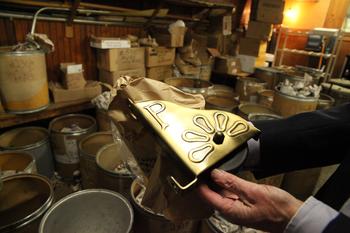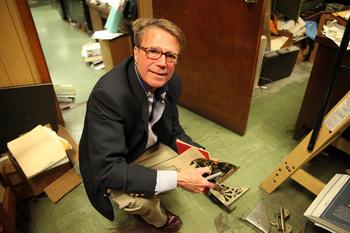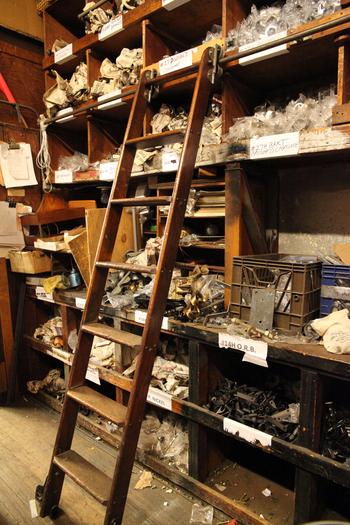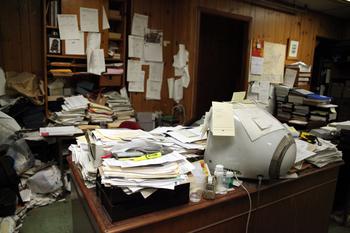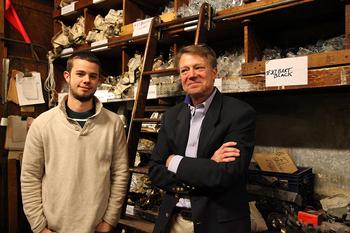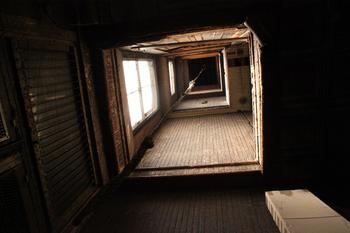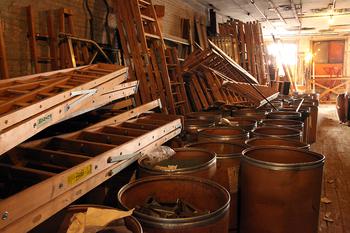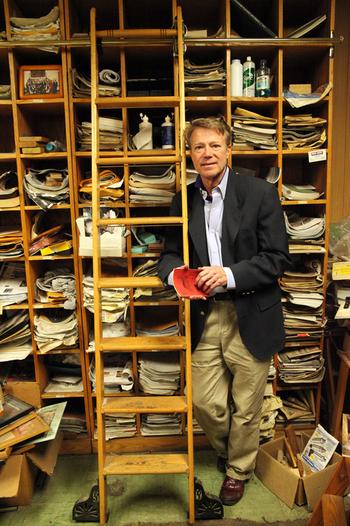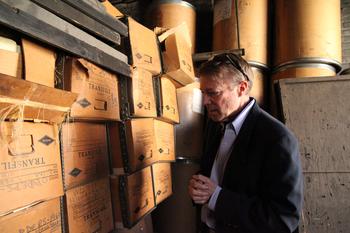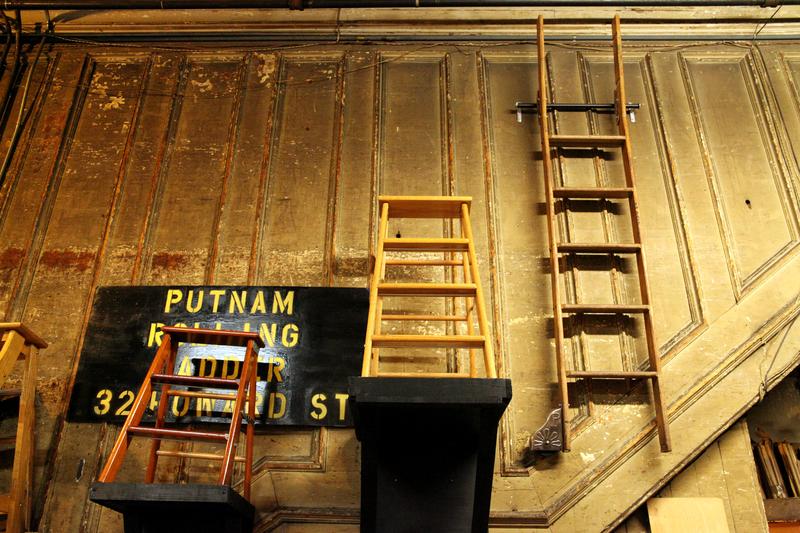
New York is a city of specialists from foodies to academics, laborers to shopkeepers. Every Wednesday, Niche Market will take a peek inside a different specialty store and showcase the city's purists who have made an art out of selling one commodity. Slideshow below.
Putnam Rolling Ladder Co., Inc.
32 Howard St.,
New York, NY 10013
There's a thick layer of dust on all five floors of Putnam Rolling Ladder Co., Inc., in SoHo, that muffles the sound of time gliding by.
Gregg Monsees, 62, president of the company, has a high appreciation for that dust and its collective memory. While delicately fingering a red company brochure at least 80 years old, Monsees paused to admire a blueprint of what is to this day the top selling model. "It’s still called Putnam Rolling Ladder No. 1, and they're still custom-made with the same type of fixtures and track and brackets," he said, tapping the page.
The original Mr. Putnam designed the ladder in 1905, and it’s remained unchanged, despite the change in company ownership. Putman sold the company to an employee, Monsees's great aunt, in 1946. The wooden ladders are manufactured in Bushwick and the hardware is still assembled in the company's building in SoHo, where Mr. Putnam's portrait has been left untouched. The company prides itself on the options it provides customers: 13 different types of wood and 18 different metal finishes to choose from. The most basic ladder model (oak wood, black hardware) starts at $1,000.
The end pages of the old brochure list Putnam's early clients by category, such as "Silks and Ribbons," "Druggists" and "Collars and Cuffs." Some clients on the page remain with Putnam even now, like Brooks Brothers and insurance companies like Metropolitan Life. Since the proliferation of the telephone, one of Putnam's biggest clients has always been AT&T — Putnam is contracted to produce specialized rolling ladders used to reach high wires in telephone switching stations.
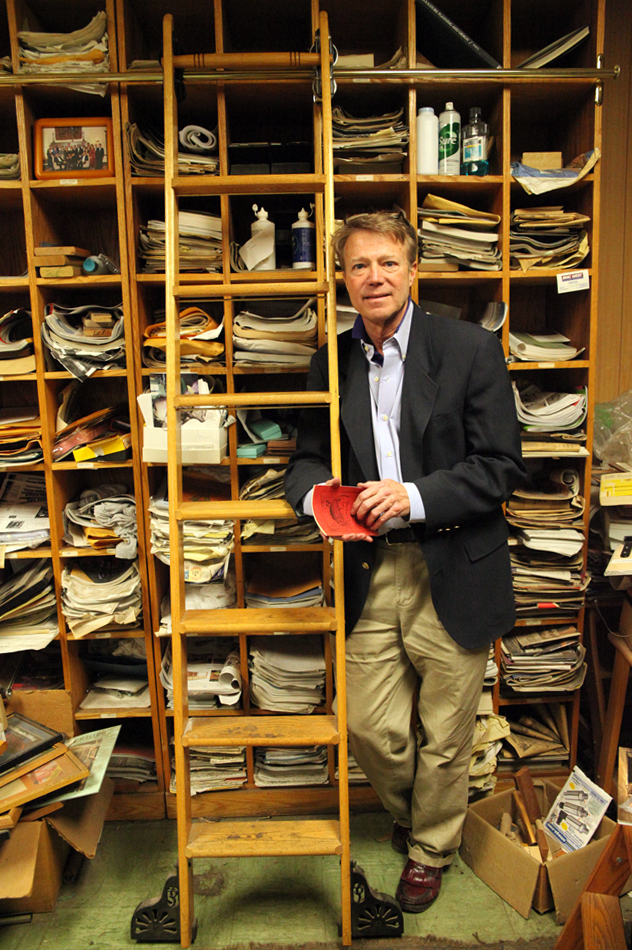
Appropriately for a manufacturer of rolling ladders, Monsees dresses like a librarian. He wears tortoise shell glasses and fraying burgundy penny loafers he can't bear to throw out. He’s happy to tell willing listeners the tale of Putnam’s history, which parallels SoHo’s transformation from an industrial zone into a territory of wealthy tenants (some of whom now install Putnam ladders in their lofts) and shoppers. Of late the company has provided ladders for numerous celebrity clients across the nation, including former President George W. Bush, Yoko Ono and Stephen Colbert.
Monsees has only been president of the Putnam Rolling Ladder Co. for less than three years. Gregg's father, Warren Monsees, held the reins, with what sounds like an iron fist, from 1950 until his death in 2009. "I worked for my father for 29 years — I did not work with him," Gregg wrote in an affectionate, 12 page eulogy, copies of which are kept in a file at Putnam headquarters.
"I'm a hoarder," Monsees exclaimed, a self-evident fact given the mounds of paper piled on top of his five desks. Though Monsees got the company onto the Internet (the "one" task for which he obtained fatherly praise), he is not computer literate, and the screen of his archaic looking Mac is covered with Post-It notes. Proudly old-fashioned, he has a secretary who prints out his emails each morning.
The entire building is littered with a half-century of old company memorabilia, ladders and ladder elements. To get to the office on the ground floor there’s a narrow path through paper piles, barrels of metal brackets, wheels and pins. The rest of the floors are kept for manufacturing and storage.
Peter Monsees, 25, now works with his father, but is decidedly not as attached to the company dust. He is constantly trying to sneak old crates out the door, which his father counters with Post-It notes labeled "Save For Gregg." Peter sighs in response. "I'll save one of each thing instead of fifty of everything."
Putnam has about 2,000 orders a year, and the number of employees has dwindled to 16. The only reason the business has been able to keep going in the city is an age-old New York story: real estate. Monsees' father bought the building — and the one next door — in the 1940s. They now rent out four floors of the second building to high-end designer Jil Sandler for a pretty penny, which has kept the ladder business afloat. But the fact that the company has managed to remain on Howard Street at all is comforting to SoHo old-timers.
"It's nice to see a company stick to making stuff in this neighborhood instead of just selling luxury products made in China," said Kent Barwick, while standing on the ground floor of Putnam after considering a purchase.
"I think every New Yorker dreams of owning a Putnam rolling ladder," Barwick added. "Once they were utilitarian, but now they're beloved."
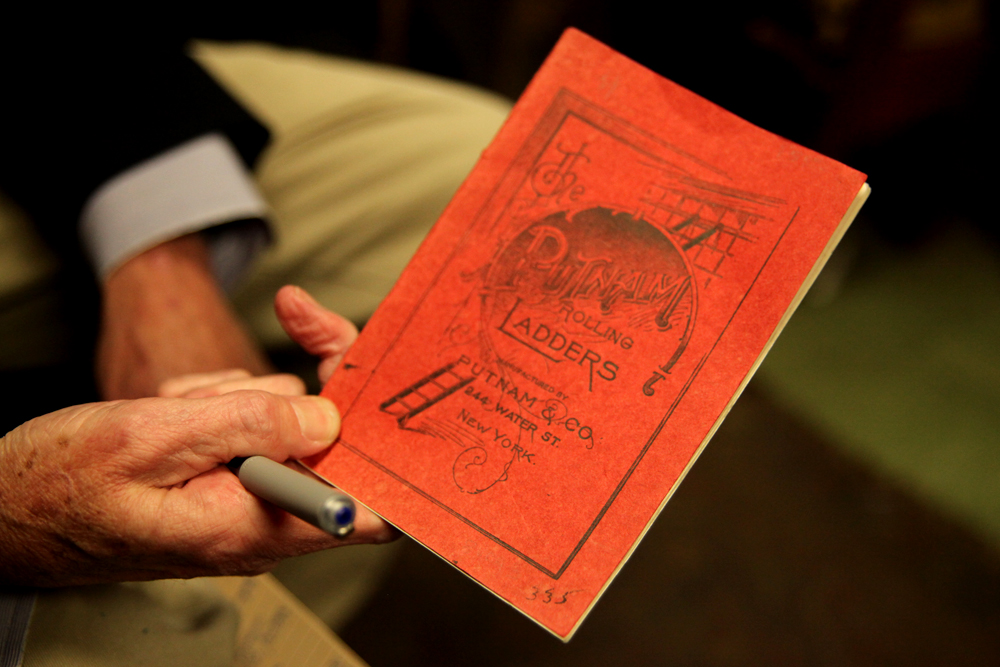
Interview with Gregg Monsees, President of Putnam Rolling Ladder Co., Inc.
Did Mr. Putnam have a patent for the ladder?
No, the key to the ladder are the fixtures on the top and the bottom, and they're patterns that we own. People make them for us in Pennsylvania. The top fixture is a slide mechanism...the top and bottom fixtures are very difficult to produce and that saved us because anybody can make a ladder but it's the fixtures that people are after and the track that goes with them.
You said you're making a lot of ladders for residences now. Do you feel that home libraries are gaining in popularity?
Yes, even with the computer or the devices that you can read books on, people they have books, and they have very high ceilings, a lot of these homes are much taller — the lofts. Sometimes people are buying the ladders and you can reach every book on the shelf — it's part of the look of the room.
Do they ever collapse?
Never, no! (laughs) What happens is the stores buy them and then the stores after how many years go out of business and we buy the ladders back. Plays in New York want a used look and we will resell them.
The ladders will outlast the business, they'll outlast the people and we buy them back. We try to make a point of getting them because people will want them. Eventually someone will come for that size and they want the worn look and we'll have it for them. So we take the ladders back because they're actually our children. We'll take them back, they can come back and spend some more time here until they go back out again.
One problem is that our customers — except for Foot Locker — are not repeat customers. Because once you buy it for your home that's it. It's not going to wear out; you're not going to buy another one.

